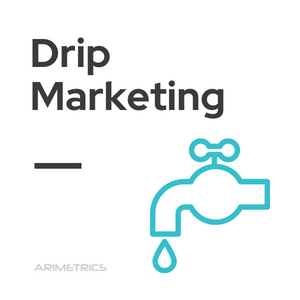 Definition:
Definition:
Drip Marketing is an email marketing campaign strategy that sends targeted emails for a predetermined period of time to target customers. It helps marketers cultivate relationships with current and potential customers by providing them with relevant, personalized content at the right time.
What drip marketing is for
Drip marketing can be used for many different things, but the most common use is to nurture customer relationships.
For example, in a marketing strategy it can be difficult to keep up with all the new customers that are acquired. Drip marketing makes it easy to send relevant, personalized content at the right time, so you can achieve regular contact with customers without overwhelming them.
You can also use drip marketing to introduce new products or services or increase customer loyalty and much more.
Examples of drip marketing campaigns
Drip marketing campaigns can be used for a variety of purposes. Here are some examples:
- Onboarding campaign: New customers are welcomed to your company by sending them relevant content or offers that help them get to know the company and its products and services. This onboarding process is essential to building long-term relationships with customers.
- Reengagement campaign: It is used to win back inactive customers by providing them with attractive offers and content that motivates them to return.
- Cross-selling: The aim is to increase customer loyalty by offering relevant offers for related products or services.
- Up-selling: Increases customer lifetime value by providing relevant offers for premium versions of the same product or service.
- Abandoned carts campaign: It is used to attract customers who have abandoned their carts by offering them discounts or other incentives to encourage them to do so.
Steps to create a drip marketing campaign
To get started with drip campaigns, here are the steps you should follow:
- Define goals – Before creating the drip campaign, it’s important to define what success looks like for the business. Are you looking to increase conversions? Increase traffic? Generate more leads? Knowing what goals you want to achieve will help guide your strategy and inform every decision along the way.
- Segment the database – Once targets have been identified, it’s time to segment your customer database so that each group receives personalized content. This will help maximize engagement and lead conversion rates over time.
- Design content – Now is the time to create engaging content for each customer segment to capture their attention and encourage them to convert or other desired actions. Make sure each drip campaign is tailored to the needs and interests of the target audience.
- Schedule campaigns – Finally, it’s time to schedule when drip campaigns will be sent. A drip schedule can be created to ensure that messages are sent at the optimal time to maximize engagement and conversions.
